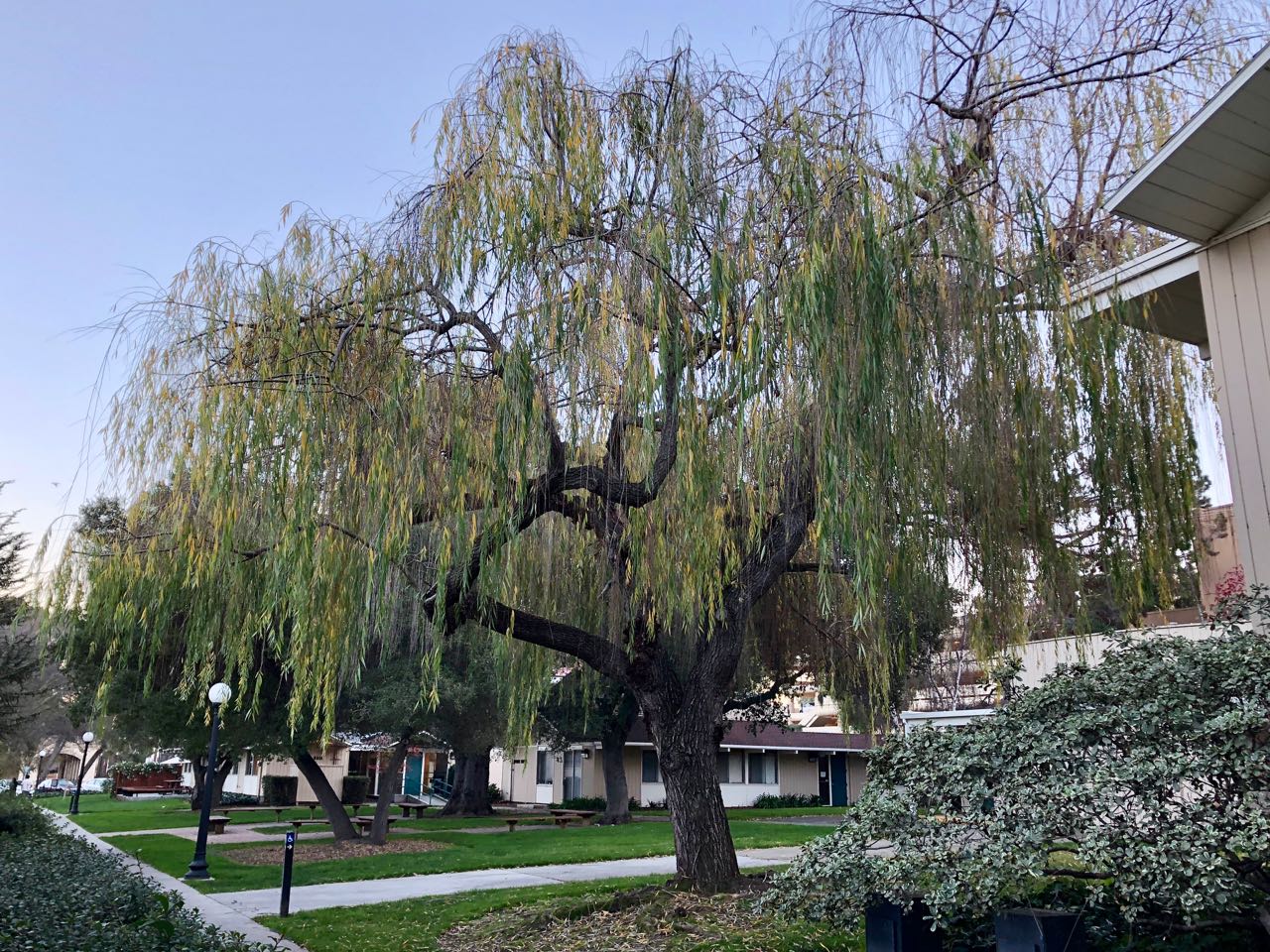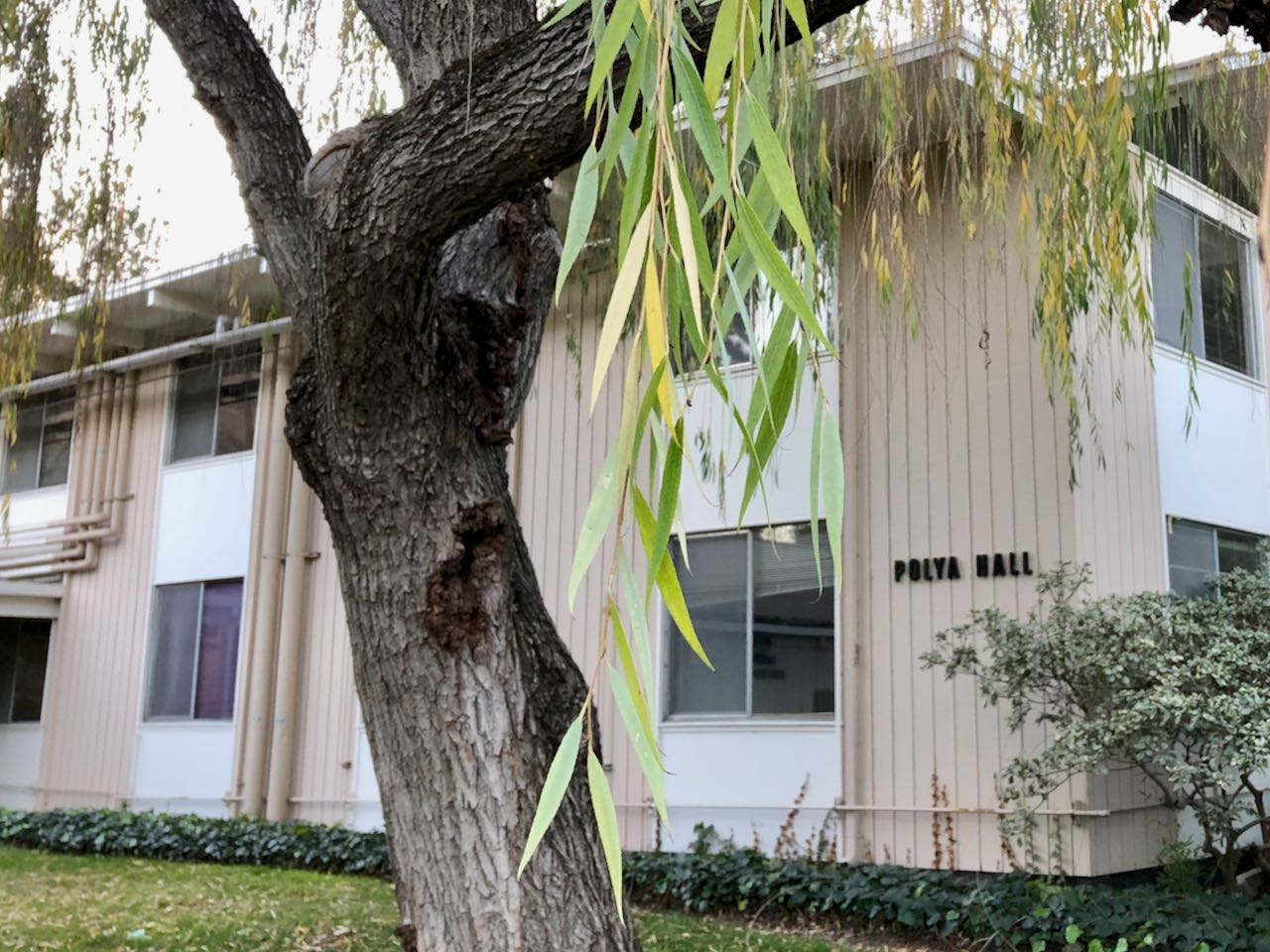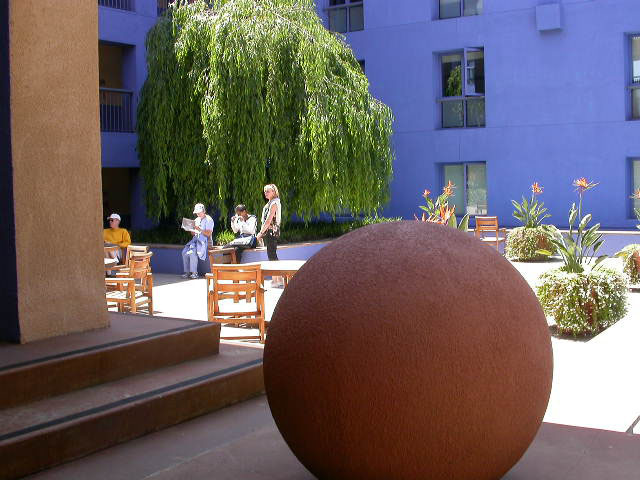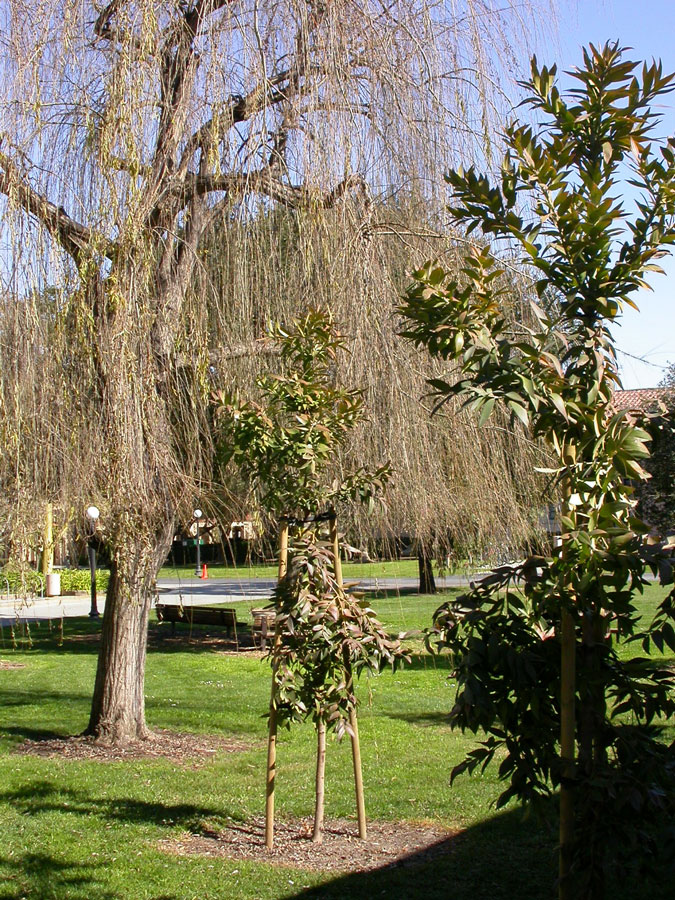Salix babylonica
 weeping willow
weeping willow
It was thought that the traditional weeping willow reached Europe, where it was named by Linnaeus, from Mesopotamia, maybe because Alexander Pope, on opening a consignment of fruit from Smyrna tied with a red willow withe, planted the cutting and said, “Perhaps this will produce a tree that we do not have in England.” But it is now believed to have originated in ancient times in China. The word willow is used in the King James Bible of 1611, e.g. in Job 40:22 and Psalm 137, but the English name willow did not then necessarily refer to the genus Salix established by Linnaeus (1707–1778); it included other brookside trees such as the poplar.
Our weeping willows are Salix babylonica or – more likely – its hybrids. Campus’s sole remaining specimen stands next to the shed behind Hammarskjöld House (592 Alvarado Row).
Some on Galvez Mall east of the southeast corner of Green Library (map pin), near the trio of Queensland kauri, were removed around 2015. One south of Redwood Hall in Jordan Quad (map pin) was removed soon after. Weeping willow used to grow on the Golf Course.
Three, including a sapling, droop over the courtyard pond at 1001 Page Mill Road in the Stanford Research Park (map pin).
About this Entry: The main text of this entry is from the book Trees of Stanford and Environs, by Ronald Bracewell, published 2005. Removals noted; all locations up to date (Jan 2019, SP). Locations updated (Mar 2024, SP).







